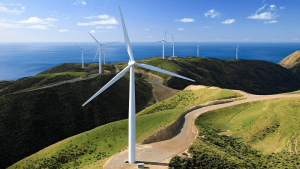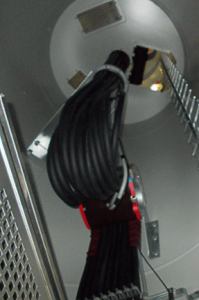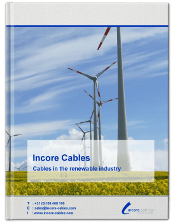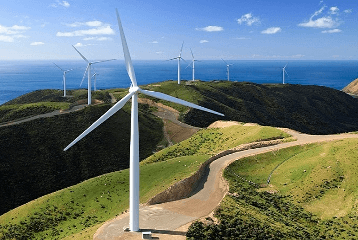Features of wind energy cables

The location of wind farms depends on whether it is onshore or offshore. Wind energy cables are expected to withstand various types of weather conditions such as high winds, salt water and extreme low/high temperatures. Cables installed within the nacelle and tower of a wind turbine are faced with a rigorous environment that includes vibration, flexing, high-torsion stress, electromagnetic interference, oil and ozone.
Nacelle cables need to be properly sized and selected to fit perfectly and maintain constant connections as the nacelle turns in the wind. To ensure the right performance these cables have to meet some general requirements.
Design of wind energy cables
The design of wind energy cables is generally a combination of high quality, thermosetting, rubber insulation and sheathing. The cables need to be resistant to standard temperature ranges between -40°C and 90°C. In some cases, if requested, manufacturers also design cables for temperatures of +120° C.
Torsion Capability

For the moving part of the turbine, the cable requires to have adequate torsional and bending flexibility with a small bending radius. Cables are tested with great care, for example tests are carried out at -40° C in which cables are twisted 4 x 360° each way over 10 meters for a minimum of 5000 complete cycles to simulate a 20-year lifetime.
Properties of wind energy cables
The wind energy cables also need to be resistant to fuel, coolant, oil, corrosive chemicals and abrasion. For offshore applications, the cable must be resistant to saltwater. There are some optional wind cables features such as zero halogens (LSZH) materials and EMI (Electric Magnetic Interference) protection, which might be required in some projects. With EMI the interior of the cable is protected against electric fields that may occur around the cable. This is an important feature for instrumentation cables.
Flexibility
It is recommended that the cable conductor is constructed of highly flexible annealed soft copper with high strand counts for flexibility needs and the ability to withstand vibrations in extreme weather conditions. These high quality features ensure a maximum life span for wind power cabling.
Copper and Aluminium cables
Aluminium cables are also suitable to use in wind turbines. Although copper is more flexible, aluminium is a reliable substitute for copper and it meets the requirements regarding flexibility. Another advantage is that aluminium cables are cheaper and they are lighter in weight. An aluminium cable can be up to 50% lighter than a comparable copper cable. This is a huge advantage in relation to the installation of the cable as the cable needs to be installed at a considerable height in the nacelle of the wind turbine.
All of the cables within the system – from the rotor to the electrical grid – must be engineered to ensure maximum efficiency, cost-effective performance and long-term reliability.

More about cables in the renewable industry?
Receive our eBook and you will find the following content:
- Renewable energy soucres.
- Wind power generation cables.
- Solar power generation cables.







